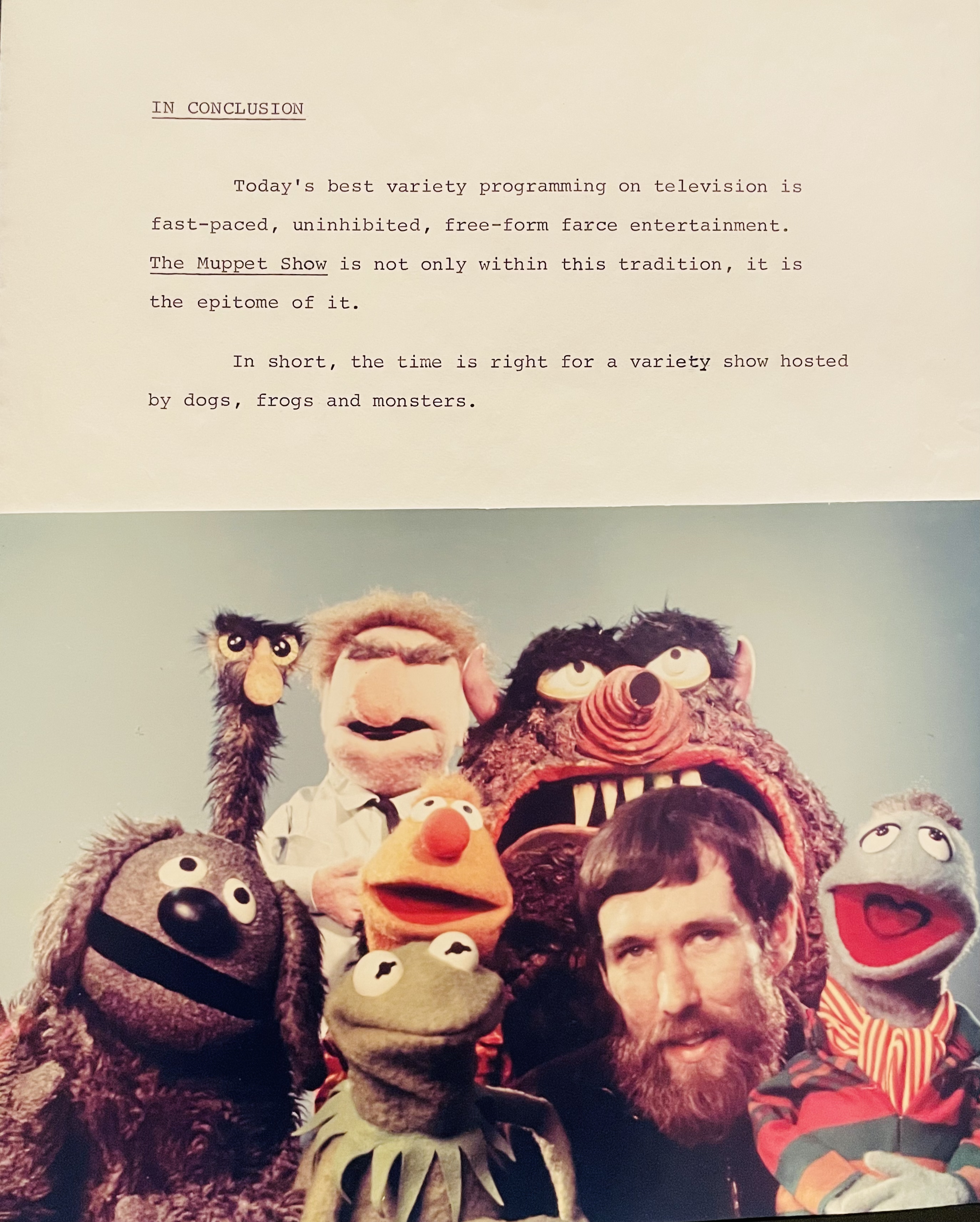
With emotionally expressive characters like Kermit, Jim Henson moved away from traditional puppet theatres by performing directly in TV studios, using close-up shots and video monitors to align the puppeteer’s perspective with that of the audience and bring characters to life. Kermit, one of his earliest creations (Owen, 1993; Falk, 2012; Ruth, 2023), became the figure through which Henson expanded the emotional range of televised puppetry.
Henson began developing this approach in Sam and Friends, where he first introduced Kermit (Owen, 1993), who would go on to play a central role in his work. His breakthrough came in 1969 with Sesame Street, where Kermit played a significant role and became a familiar presence for children. Building on that success, Henson pitched The Muppet Show for adult audiences (see image of pitch document below). Although initially rejected by U.S. networks, the show launched in London in 1976 and became a global sensation, reaching 235 million viewers and winning three Emmys (Owen, 1993; Muppet Wiki, n.d.-b; The Jim Henson Legacy, n.d.-b). Kermit, as the host of the show, takes on the task of managing the backstage chaos, mediating conflicts among the group. In doing so, he reflected Henson’s characteristic combination of humor and sincerity, with the aim not only to entertain but also to enlighten audiences (Hubbell, 2015; Lasky, 2023; Leonard, 2015; Owen, 1993). The success of the show resulted in several feature films and an animated series (The Jim Henson Legacy, n.d.-b), further extending the Muppets' presence beyond the original program.

Henson’s commercial projects brought together a close-knit team, including puppeteers Frank Oz and Jerry Nelson, and head writer Jerry Juhl, who helped bring his creative vision to life. In collaboration with designers like Don Sahlin and Faz Fazakas, Henson expanded into mechanical puppetry and animatronics, laying the foundation for techniques later advanced within the Jim Henson Creature Shop (Falk, 2012; Jim Henson’s Creature Shop, n.d.; Owen, 1993). The Shop became a hub for innovative character creation, contributing to Henson’s technical experimentation in puppetry. The legacy of Henson’s work, through the people he trained and inspired, continued to shape iconic characters such as Yoda and Grogu (Falk, 2012; Ruth, 2023; Postek-Mioduszewska, 2022). Yet Kermit, from his earliest appearances, most clearly embodies Henson’s redefinition of TV puppetry. His continued presence on screen reflects the lasting impact of Henson’s creative vision.